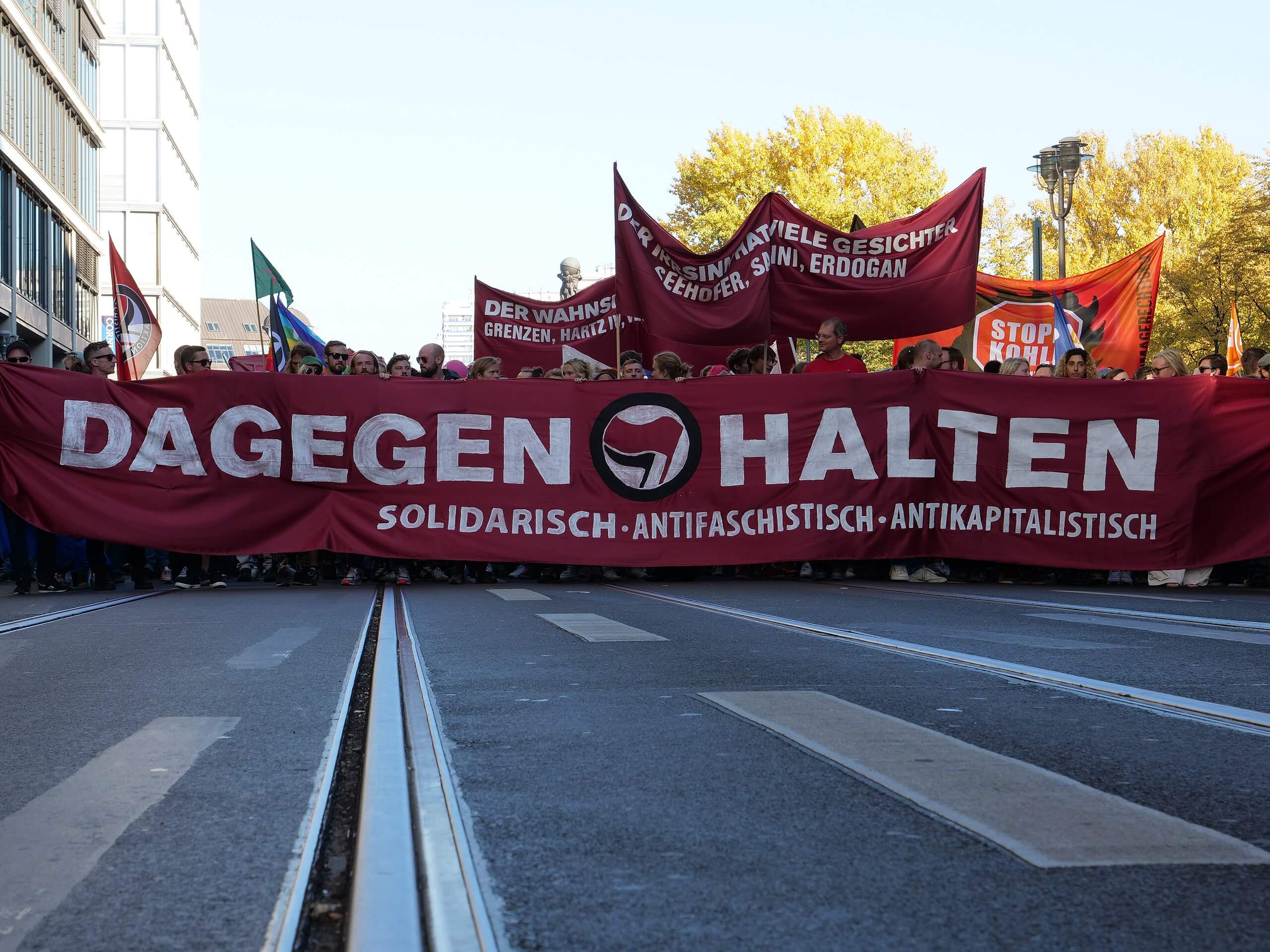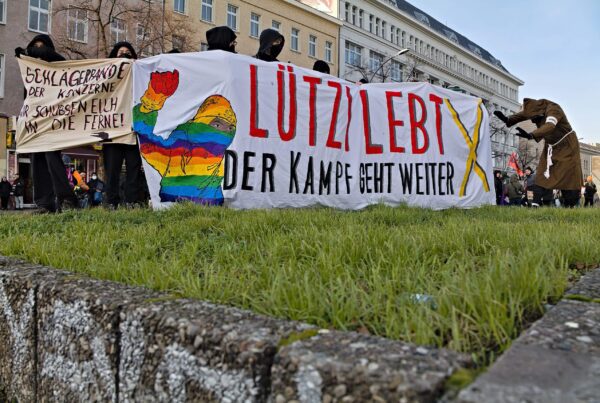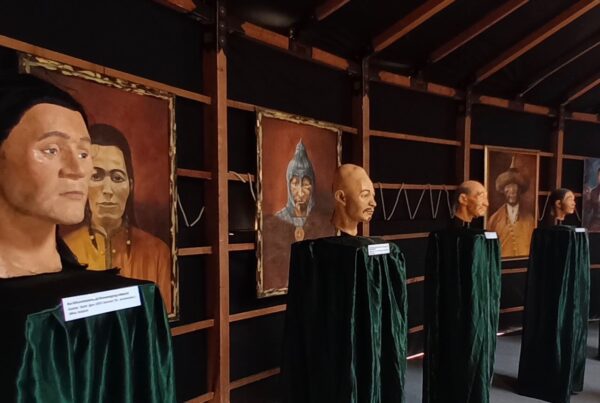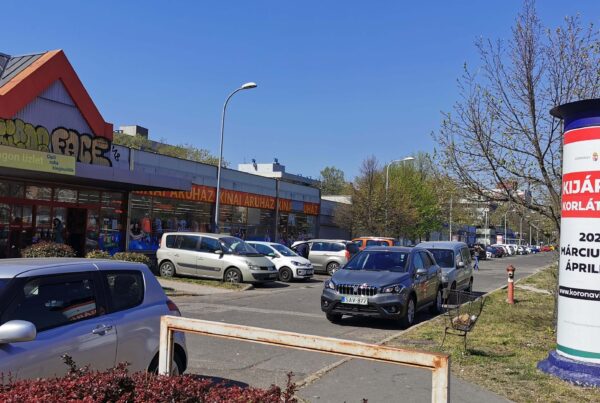This text argues for a problematization of the concepts of Critical Whiteness and related identity politics in the field of anti-racism. It aims to show that the dominant U.S. concept of white supremacy overlooks large parts of the history of European and especially German racism and, as a theory import that is gradually becoming hegemonic in Germany, even render this history invisible. I will also be arguing that racism is not an identitarian project, even if it produces identities, but a tool for distributing rights and wealth unjustly. It is not so much about affiliations and corresponding privileges as it is about the unequal rights that lead to these relationships. In the strong identity politics of recent years, this article sees instead increasingly authoritarian forms of politics, which unfortunately are not new in the history of the left.
The anti-racist movement in Germany is in a deep crisis intellectually, conceptually, and politically. This is despite the fact that an unprecedented number of people are doing solidarity work and taking to the streets in overwhelmingly large numbers to do so. The demonstration #unteilbar in Berlin in October 2018, with its quarter of a million participants, was the most impressive sign of this, along with, also in that year, the parade We’ll Come United, which took place in Hamburg with over 30,000 people. We’ll Come United transcended all previously known dimensions of migrant self-organized demonstrations. The large mobilizations after the racist attacks and mass murders of Halle 2019 and Hanau 2020, together with the Black Lives Matter movement, produced a new dynamic of migrant self-organization. Nevertheless, in contrast to the 1990s and the early 2000s, it is no longer possible to formulate a comprehensive social critique from the perspective of antiracism or to gather the movement-political left for a corresponding transformation project. At that time, driven by reunification and racist pogroms during the early 1990s, new anti-racist practices and theories were able to capture and mobilize large parts of the various civic currents by highlighting the struggles of migration and making visible the democratic moment inscribed in them. Today, the complex of anti-racism faces unsolved problems due to the changed global situation of the last decade and the racisms that have changed as a result. Above all, it cannot find answers to the new racist divisions opened up by anti-Muslim racism and racialized security policies in the process of European integration. Moreover, austerity policies as a war against the poor—expressed in Germany through the permanent tightening of the Hartz-IV regime, i.e., the infamous measures to deregulate the welfare state—have pushed millions of people into unsecured cheap jobs and into poverty. This regime, originally imposed by the Social Democrats-Green government at the turn of the millennium, intensified during and due to the COVID-19 pandemic. The effect was that all hitherto existing notions of how exclusion, exploitation and discrimination could be reduced or even overcome in the political sphere were rendered impotent. The vision of a just society for all seems increasingly unimaginable, increasingly unthinkable.
Into this void, both theoretical and political theorems have been able to unfold, stemming from academic debates around post-colonialism, intersectionality, and gender studies and drawing primarily on U.S. texts from the 1970s, a time when the Civil Rights Movement suffered decisive defeats and, as a result, dogmatic concepts permeated the left, the women’s movement, and the Black Power movement. The political effect of these debates was primarily identitarian attributions along an axis of oppression, to which a hierarchy of interpretive sovereignty was attributed according to the respective positioning.
This phenomenon, however, is not new. Rather, we often encounter an element of authoritarianism in the moment when social movements are forced to defend and stabilize gains in the face of a slowing of momentum. In these moments we see attempts to consolidate power, the formation of defensive internal group culture, of institutionalization. It is worth taking a look at history.
Authoritarian turn of revolutionary movements in history
When, in the wake of World War One, the phase of revolutionary uprisings in Germany against war, Kaiser, and capitalism ended with their military suppression between 1918 and 1921, many leftist opposition elements split off from the German Communist Party (KPD). The authoritarian Bolshevization of the Communist Party led to increasingly oppose so-called left dissenters in the name of the “Einheitsfront,” a left united front, purging its ranks of internal criticism from 1923 onward.
The 1960s saw a fundamental oppositional impulse take hold of the young post-war generation. This was transmitted worldwide in revolts against the existing political, economic, and cultural conditions. In the process, a turning-away from the various Western Communist Parties and their orientation toward the Soviet Union took place. In this historical moment, identitarian positions played a subordinate role; the revolutionary moment was characterized explicitly by the belief in and desire for something that was not yet known, but nonetheless felt tangible and within reach (in the revolutionaries lifetimes). Not “Who are we?” but “Who do we want to be?” became the visionary impulse of this short but nevertheless formative period. In the moment where desire turns into program, driven by the disillusionment of that desire, the moment that this desire was given explicit form, specific identities, we can mark the end of the revolutionary phase. In the transition to the 1970s, this revolutionary impulse exhausted itself—paralyzed and intimidated, as it were, by bloody counterattacks. As in 1921, the time had once again come for the functionaries of various Maoist K-groups to try to gain control and organize the dying movements. In their increasing irrelevance, many leftists reversed the dynamics of movement and organization, making the former dependent on the latter. The many splinter groups fought each other fiercely.
In the late 1970s, precarious mass workers in the industrial centers of northern Italy and northern Europe said goodbye to those authoritarian K-groups and parties in favor of the new idea of Autonomia. In Western Europe, the Autonomists movement took form. This movement sought to organize politically against oppressive structures while simultaneously seeking personal experience of liberation and the realization of living utopias in liberated spaces, such as squatting houses or centers. This Operaist impulse, which was born in the militant struggles of migrant mass workers and which did not emphasize the organizational unit, but rather relied on the diverse struggles of the discontented, ended with German reunification and the intensifying attacks that took place in the national frenzy of the 1990s.
A decaying remnant of the autonomous movement in the early 1990s was the anti-Germans. Emerging from an urgently needed critical debate about left-wing national liberation movements of völkisch provenance and anti-Semitically tinged anti-Zionism, this movement radicalized and finally declared all Germans to belong to an extermination collective that should be abolished. The relationship to the State of Israel became the Gretchen question of entire post-autonomous and anti-fascist scenes in various cities, which subsequently disintegrated into bitterly warring factions. In this extreme reduction of the various social contradictions, left-wing fields of action were consistently denounced and attacked by anti-German groups; parts of the anti-Germans became explicitly anti-left.
It was precisely in this area that mechanisms were developed that reappear, structurally identically, in Critical Whiteness. Here, too, the concept of violence has been totalized, the power of definition expanded to the point of diffuseness, and the right to sanction generalized.
Critical Whiteness poked into the void left by the anti-racist movement of the late 1990s and 2000s. At the end of the 1990s, there were camps, debates, interventions, and knowledge productions that could gather an entire left and—very often—succeed in overcoming the division of labor within the Left between the paternalistic care of refugees, the political intervention against structural racism, migrant self-organization as self-defense, and organized antifascism against neo-Nazis. In the field of antiracism during the era of the multitude, it was possible to address social relations as a whole and, starting from the struggle against racist stratification, to radically question class relations as well as gender relations.
In view of the new world situation, with its permanent wars in the Arab world, racism has changed globally. For Germany, this has meant that it is no longer primarily about the social subordination of migrants to secure the economic position of the majority. The country no longer needs the migrant mass worker on the assembly line and the migrant care worker in the reproductive professions to enable the majority of Germans to rise in class, as was the case from the 1950s to the 1980s. Even though this structure of exploitation remains a function of racism to this day, a new, primarily identity-forming element has been added. Anti-Muslim racism has opened a rift between migrant communities: Spaniards, Greeks, Italians, and Portuguese suddenly stand on one side, people from Turkey, the Maghreb, Syria, Lebanon, Afghanistan, and Iraq on the other. The former “Kanaks” have suddenly become Europeans, while the latter are identified as Muslims. Yet both groups have remained part of Germany’s precarious underclass. With the eastward expansion of the EU after the end of the Cold War, many Eastern Europeans especially as commuter migrants and seasonal workers in care work and as harvest workers in agriculture, as well as immigrants from the post-Soviet states and refugees from the Balkan wars, were added to this mix, taking on a third position, but also becoming targets of racism. With West Germany’s ties to the history of the Western hemisphere, people from Eastern Europe were considered more foreign and less European—or, as Hans-Christian Petersen puts it, European, but not European. To some extent, this also affected the population of East Germany, whose history, culture, and social position remain extremely devalued to this day: not entirely without reason, some contemporaries speak of East Germany as the Mezzogiorno of Germany.
Faced with this challenge, the movement-political anti-racism of the 1990s generation—which had dealt with reunification, nationalism, and racist violence—fell into a deep crisis. A political and theoretical void opened up that has hardly been closed to this day. And precisely at the moment of the loss of this movement, authoritarian and identitarian concepts re-emerged, gaining significance—as so often in history—through exclusions and threats. We are currently witnessing this in the German context with the phenomenon of Critical Whiteness.
Concepts and Practices of Critical Whiteness
Current debates on the topic of Critical Whiteness are unsatisfactory, however, because they either pursue a critique of political forms that disregard the concepts of this approach or they work off the theoretical concepts without taking an interest in real political action.
At first glance, the engagement with CW theorems—that primarily represent a reduction of theory—illustrates their potential to make differences between various social positions and actors visible. Thus, normative belonging to the group of profiteers of racism can now be analyzed as a construct. Whiteness as an invisible norm becomes visible as a social construct and thus attackable. The historical situation of the 1960s in the US showed that the identification of inequality does not have to remain descriptive but can also transport the condition of its abolition. Self-described “Third World Women” wanted not only to make clear to their white “sisters” that the common struggle against patriarchy was still preceded by a veritable racist relationship of exploitation between the women themselves, but also to draw attention to the fact that the notions of Black and white erased the experience of those women who—either as U.S. Latinas or else as women from the global periphery—were struggling against their specific relations of exploitation. The term “Third World Women” proposed at the time, or even the term “People of Color” that gained acceptance, signified an expansion of anti-racist theories and practices, an expansion of political subjects in the struggle against oppression. It globalized the fledgling perception of a significant relationship of domination at a time when very few on the left were operating with the term “racism”, and it dynamized both the (male-dominated) Black Power movement and the (white-dominated) women’s movement in the United States.
The reference to this intervention, for which groups like the Combahee River Collective stood in the 1970s, is, however, not applicable tor German conditions because it did not expand the struggle against racism, as in the US, but rather rendered the resistance of a majority of non-Germans invisible. Whiteness—as Noel Ignatiev makes clear—is the correct term for conditions in the US, where colonial history and an economy historically based on slavery have kept Blacks at the bottom of the social ladder for more than 300 years. Germany, however, has a different history of racism. Without going into detail it is worth noting that a völkisch nationalism prevailed and still prevails in Germany, which went into the Battle of the Nations against the hereditary enemy France just as it carried out extermination projects against the “Slavic race” and just as it carried out genocides against the ancestral populations in its short-lived colonies in East Africa and in present-day Namibia at the beginning of the twentieth century. This nationalism is characterized by an eliminatory antiziganism and an eliminatory anti-Semitism, which industrially murdered millions of people—and, more recently, by the racist exploitation and disenfranchisement of migrants, primarily from southern Europe. We also see specifically German racism in the current resurgence of anti-Slavic racism, in response to the present Russian war against Ukraine. The current attempt to label refugees from Ukraine as “Europeans like us” and to play them off against the old enemy, Russia, renders invisible the fact that people from Ukraine have for decades been discriminated against and exploited in Germany, especially in body-related services, and have been treated no differently than migrants from Russia, Kazakhstan, and the many other states of the former Soviet Union, whose histories are inextricably interwoven anyway. As Hans-Christian Petersen and Jannis Panagiotidis aptly summarize in their plea for an eastward expansion of the German debate on racism, the construction of the category “race” in the German context cannot be understood only through dichotomies and does not relate only to skin color.
Black Germans have endured racist experiences in this country precisely because they were and are assigned to certain stereotypical cultural spheres in the racist division of society and are exposed to racist violence. However, Black Germans occupy different social positions than African Americans working in the lowest segment of industry, service, and agriculture in the United States. In this country, such work was done by foreign and forced laborers under National Socialism and after the war in West Germany by so-called “guest workers” from Italy, Turkey, Portugal, Spain, Greece, Yugoslavia, Tunesia, Morocco, and South Korea and in East Germany by so-called “contract workers” from Algeria, Angola, China, Cuba, Mongolia, Mozambique, Poland, Hungary, and Vietnam. They are the ones who have been standing on the assembly line, disposing of the garbage, and cleaning the toilets in Germany for the last four decades. This is a fundamental difference from the situation in the former slave society of the United States, where Black people have had the same civil rights as white Americans for 150 years, yet continue to be structurally and comprehensively disenfranchised because they are black. In Germany, the disenfranchisement manifests itself as legal denial of civil rights, which affects all so-called foreigners, today especially refugees and (of these) especially those from Africa.
The constant reference of the German critical whiteness community to activists from the US—e.g., Audre Lorde’s stay in Berlin in 1984, as a result of which she aptly criticized her German sisters for their idea of a universal sisterhood, or the writings of Toni Morrison or bell hooks—as well as the self-assignment in narratives of the diaspora, makes invisible that in the early 1970s it was mainly the guest and contract workers who struggled and bled, both in the factories and outside. The migrant struggles in West Germany of the 1970s and 1980s already articulated the same critique that early Black feminists in the US, from Sojourner Truth to Angela Davis, articulated to their white counterparts: the racist divide must be recognized and overcome! In contrast to the American poets, however, the immigrant proletarian women and men were widely ignored by the German bourgeois women’s movement, by the left in general, and by the supporters of CW.
The current focus on the historical context of the US of the late 1970s and 1980s by local proponents of critical whiteness is a misimportation that stems from a class-blind discourse-theoretical preoccupation with white domination in the Americas and thus fails to take into account the history of Kanak struggles in post-Nazi Germany. The resulting hierarchical splitting of racism and “migrantism,” BPoCs and migrants, the reference to the Combahee River Collective of 1974 while simultaneously ignoring the 1973 strike of migrant women workers in Pierburg/Neuss, is academically elitist and effectively magnifies the lines of social division.
The reference to racially stratified people beyond the black/white dichotomy that the original term PoC sought to capture had been a necessary critique and an effective extension of anti-racist struggles in the US. In Germany, on the other hand, it means a narrowing that invisibilizes and excludes the struggles of the migrant subaltern. It effects the return of the racialized phenotype that evokes a division between “black heads,” as the southern European guest workers were contemptuously called due to their hair color, and “black skin.” Even though it is repeatedly asserted that a PoC is anyone who is affected by racism, the concrete exclusion mechanisms within this scene show that it is about a strict hierarchization within communities affected by racism.
Elahe Haschemi Yekani et al. remind us in their critical discussion of the German reception of Black feminist theory from the US that intersectionality actually started out with the goal of clarifying identity categories instead of fixing them and playing them off against each other. Most clearly, the dangerous hierarchization and elitist ignorance of German provenance toward racially discriminated migrants is reflected in the silence of critical whiteness groups on the extensive series of 9 racially motivated murders and multiple attacks against the sons and daughters of the guest worker generation by the Nazi cell NSU during the 2000s. In the logic of Critical Whiteness, according to which German anti-racists are defined as white and therefore just as racist as Nazis, it is seemingly logical to act loudly and destructively against anti-racist plenums, but to pass over racist murders in silence.
Language, Privilege, and Awareness
In Critical Whiteness, while domination appears structural, it nonetheless operates primarily as an individual act of communication. The discourse-theoretical reductionism of the idea that “white spaces” and concrete relations of dominance could be changed through institutionalized naming practices and individual unlearning, hides the social mechanisms of racism, especially the fact that racism has a structuring function for exploitation. This function is rendered invisible with the emphasis on individual codes of behavior. What remains is a neoliberal inwardness that can be observed everywhere, which no longer wants to know anything about social change, but only speaks of exclusion, because it can no longer think of the individual as socially stratified, but only positioned as an individual. The penetrating question “Where am I racist, where am I white, where am I overlooked, where am I privileged, where am I traumatized, how do I talk, how am I talked to, how do I move, how do I affect someone else, how do I feel about the other?” entails a permanent self-reflection and self-optimization that is no longer able to think the universal out of the particular.
Racism is, however, not so much an internalized wrong thinking or an innate characteristic that has to be hold in check by a language police as much as it is a practice that has the structuring function of distributing people in social space and fixing them in specific positions. That is, racism is not an identitarian project, even if it produces identities, but a way to distribute rights and wealth unjustly. It is not so much affiliations and corresponding privileges as the unequal rights that lead to these relationships. Moreover, privileges—e.g., the right to vote—are often bitterly-fought-for rights that should actually apply to everyone. At its best, an anti-racist perspective therefore has in mind the struggle for rights for all, rather than the enforcement of repression for all, as seen in the authoritarian “awareness” policies of critical whiteness. The discouragement or “discomfort” of the majority society does not lead to empowerment of the marginalized. Rather, what is needed is a political intervention that does not envy the privileged their privilege but appropriates it by creating alliances of solidarity. Instead of a retreat into homogeneous groups within a safe space, combined with the wish that an ever-present watchdog team banish any pain to the outside, there could be an orientation toward the other (in us), which measures and establishes the common(s) in shared social spaces. This would be the exact opposite of an awareness concept in which regression and powerlessness are constituently (self-)inscribed. Paradoxically, as Daniele Grigioli stated, this self-positioning as powerless leads, politically, to marginalized groups struggling primarily to be recognized as oppressed and thus affirming rather than challenging the social hierarchy.
Debts from the Past and Shifting to the Future
This text argues for a migrant perspective that has an interest in both practical intervention and theoretical reflection, and in which the struggle for social rights, rather than post-political camp formation, is about a different future. The history of migration and Black Liberation shows that racism could always be overcome by people transcendentally anticipating conditions that did not yet exist. These movements always spoke to us from the future. Transcending one’s own imposed identity boundaries as well as the boundaries of the other are constitutive elements of this: it is necessary to tread a terrain that is still non-existent but can be produced in these moments. People are never identical in their identities, and it is precisely out of these contradictions that they become capable of emancipation. It is not (always only) about the perfidious concealment of power relations, but about changing these relations, about creating heterotopic places where normative attributions lose their validity—even if only temporarily. We need these places, because there we gain a future image of something worth fighting for. That such places cannot and must not exist, in the opinion of many critical whiteness activists—that, on the contrary, spaces must be permanently controlled by a self-proclaimed avant-garde—is dystopian, sad, hopeless, and above all threatening, because it means the abandonment of struggles for universal liberation, in favour of the repressive promise of harmony in one’s own particular entity.
We can only free associate through a desire for liberation and a good life, respectively a “vivir sabroso,” as stated recently by Colombia’s black vice president Francia Márquez, and not through fear of each other. This means that encounter, communication, and common action must open the space for change instead of aligning and hermetically sealing it to the supposed or real security needs of injured or traumatized people in anticipation of possible violations. This is not easy, nor is it a plea for harshness or ignorance of the real experiences of everyday structural oppression. Instead, it is a proposal to transcend them—which offers the only possibility of overcoming racist divisions in society. This “we” should appear neither given nor voluntaristic. Lines of demarcation have their justification and are often important, even sometimes essential for survival. This “we” can only be formed in concrete struggles; it is not an identitarian we, but one formed through acts of solidarity. What is missing is a notion of alliances of solidarity based on mutual critique and shared experience. This is a politics and an attitude oriented toward a better life in the future, and hence the opposite of a political morality secured on debts from the past. This struggle is a shift toward a future that potentially includes everyone—even the sad white figures with their nice privileges.







